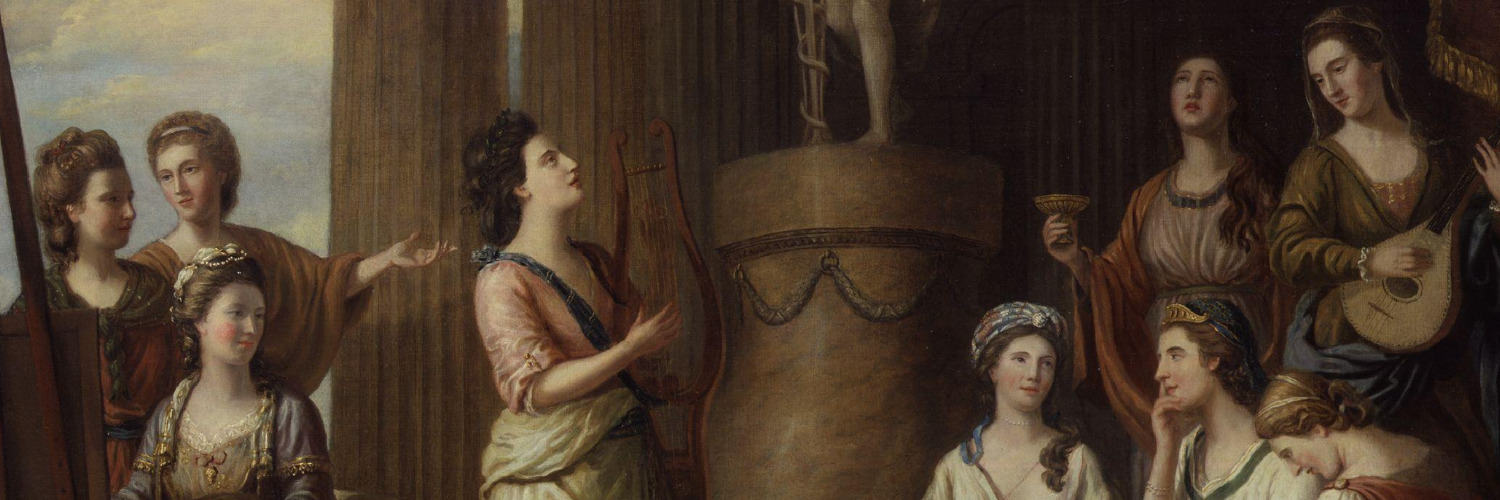- Physical form: One sheet folded into 2 leaves (18.5 x 22.8 cm)
- Cover: Mrs Withering / the Larches / Birmingham
[another hand corrects by inserting “of” before “the” and putting the line in parentheses; deletes “Birmingham,” and writes “Mrs Botfield’s / Norton Hall / nr Daventry”] - PM: 7 o’Clock / MY 18 / [xx]3 N.T.
STOKE NEWINGTON / MY 18 / 181[x]
B M A / 18 / 813
BIRMINGHAM / May 21 / 120 - WM: RUSE & TURNERS / 1811
- SM: Misc MS 4375
It gave me great pleasure to hear from you & still more to hear that you & Mr Withering think of coming to town. I am impatient for the pleasure of seeing you, which I hope you will indulge me in as soon as you conveniently can, & a very great pleasure indeed it will be to renew the intercourse which once was so frequent with you & to improve the acquaintance with Mr Withering which was commenced by the glimpse you were so good as to give me of him soon after your marriage. London is particularly full at present. I do not often venture into its crowded streets, the bustle of which is now particularly disagreeable to me, but I was drawn there the other day by a strong inducement, the meeting Miss Edgeworth, who with her father & his fourth wife a handsome & very agreeable woman are now in London.
Miss E-s merit is now universally known & properly appreciated & her door is in a manner besieged with admirers. She brings with her a story of three Volumes which is to be printed this summer. I know no lady who at present stands so high in the public esteem except perhaps Hannah More in a certain set.
A very large set however!
[fol 1v] Me de Stael, a star also of the first magnitude, will soon shed her brilliancy upon the London circles.
I suppose she is the most eloquent woman now existing. As, however, she is not supposed to be the purest of characters, some doubts were started whether she would be noticed, but I see by the eagerness people express to get a sight of her when she comes, that matter will be got over.—The most fashionable amusement now in London seems to be Mrs Siddons’ readings.
She has very wisely made her tickets a guinea, & those who did not care for going when they might see her in the boxes for six shillings, & the play properly got up with all its accompaniments, are glad to crowd to the Argyle rooms where she gets five or six hundred pounds a night by reading. A little coquetry with the public succeeds very well. It is true in this case you have the advantage of having no inferior actors to take off the illusion, & finer modulations of her fine voice than the size of our large theatres will allow— I dined lately at Mr Belsham’s & was happy to inform him & Miss Belsham of your health. I think Mr Belsham has quite recovered his indisposition of last year. Miss Mary Kenrick I understand is to be married in July.
Do you ever my dear Mrs Withering remember so fine a spring as we have had this year? It realizes the poetical descriptions of it which have been so often given & which have been thought more adapted to the warmer climates
[fol 2r] from whence the images have been originally taken than to our chilly atmosphere, but this April has deserved it all— There is an Exhibition open at present of the late Sir Joshua Reynolds paintings, which the proprietors with great liberality have sent for exhibition. I was much gratified to see so many fine pieces together, tho, as to many of them which I had seen as they came out in all their freshness & beauty, such was their faded appearance that it was like seeing a beauty whom one had known in her bloom after she was grown sallow & withered.
That objection however does not apply to his Ugolini,
where the ghastly appearance of the wh[ol]e group is quite in unison with the state of the picture [.] West
has another large painting exhibiting at his house Christ before Pilate, but neither is this I understand to go to America——Have you seen a new Poem of Montgomery’s? The World before the flood.
Room enough you will say for imagination [.] You will be pleased with many parts which are finely wrought [no punctuation] particularly by the death of Adam—I am much obliged to you for sending me the letters.
What an immense study History is now become! How much employment has the last twenty years given to the Historic Muse. Surely she must strike off from her roll some of her old heroes to make room for the new names which croud upon her. We can at least spare Theseus & Hercules & half a hundred more of whom we know so little & who fill the middle space between
History
[fol 2v] History & Fiction— I delivered your message to Arthur, he begs his compliments. Pray make mine to Mr Withering I am my dear Friend with sincere affection & esteem
Your's
May 18th

